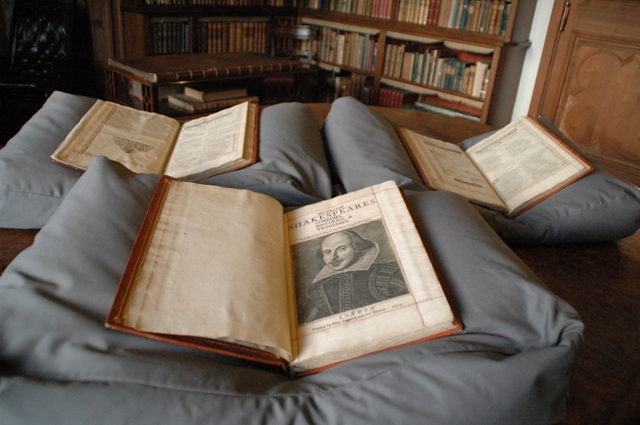Rare Collection of Shakespeare Plays Turns Up in Scottish Mansion

William Shakespeare's First Folio —the Bard of Avon's first collected edition of 38 plays, published in 1623, shortly after his death —is among the world’s rarest and most valued books. Without it, we might not have ever known "Macbeth."
Now, a previously unknown copy has turned up in a Gothic mansion.
The folio was discovered in the collection of the Mount Stuart house, on Scotland's Isle of Bute, and ithas been authenticated by Emma Smith, a professor of Shakespeare at the University of Oxford. [History's 10 Most Overlooked Mysteries]
At the time of Shakespeare's death, at age 52 in 1616, only about half of his plays had been published. They typically appeared in quartos, which were small stand-alone editions that could be printed cheaply. Then in 1623, John Heminges and Henry Condell —who were part of the King's Men acting troupe —collected Shakespeare's comedies, histories and tragedies for a large-format folio edition.
Had the First Folio never been published, more than half of Shakespeare's plays might have been lost to history. "Julius Caesar," "Twelfth Night," "The Taming of the Shrew" and 15 other plays all appear in print for the first time in this collected edition.
The First Folio also includes as its frontispiece the Martin Droeshout portrait of Shakespeare, which is considered one of the rare reliable likenesses of the great playwright, as it was approved and published by his friends.
Scholars think that, at most, 750 copies of the First Folio were printed, according to the Folger Shakespeare Library in Washington, D.C. Of those, 234 are known to have survived, including the newly authenticated version. Slight differences in each copy are partly blamed on theproofingthat happened during printing. According to a statement from Mount Stuart, their version is unusual because it is bound in three volumes, with many pages left blank for illustrations, as well as for annotations and notes from its onetime owner Isaac Reed, who edited versions of Shakespeare's works in the 18th century.
Sign up for the Live Science daily newsletter now
Get the world’s most fascinating discoveries delivered straight to your inbox.
"This is an exciting discovery because we didn't know it existed and it was owned by someone who edited Shakespeare in the 18th century," Smith said in the statement.
Reedapparently bought his copy of the First Folio in 1786 and records suggest it was sold after Reed's death in 1807 for a mere38 pounds ($54). Sometime after that, it ended up in Mount Stuart's collection.
The last time a new copy of the First Folio was authenticated was in 2014, when one of the books turned up at a public library near Calais in France.
When it comes to Shakespeare, authentication is crucial because forgeries and apocryphal works have been around for basically as long as Shakespeare. In the late 18th century, William Henry Ireland famously forged Shakespeare documents as well as a "lost play" called "Vortigern and Rowena," which was revealed to be a hoax soon after it was performed and ridiculed by the audience.
As for faking Shakespeare documents today, it seems the incentive is pretty clear: The auction record for a First Folio was set in 2001, when the New York auction house Christie's sold a copy for $6.16 million.
Follow us @livescience, Facebook & Google+. Original article on Live Science.










